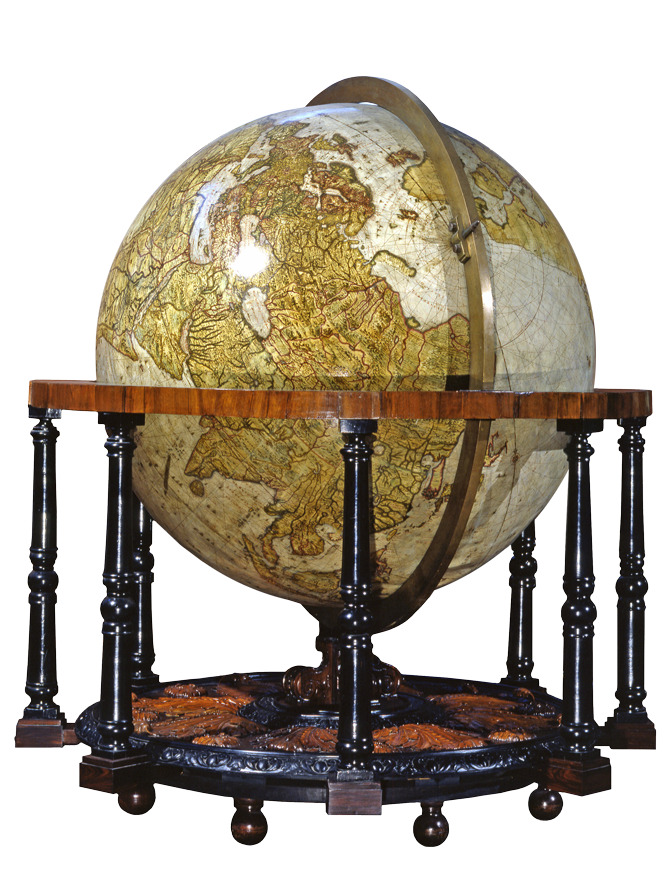TERRESTRIAL GLOBE

It is a Unique monument of European cartography. A giant sphere weighing of 450 kg, made of copper plates, perfectly painted in accordance with the cartographic knowledge of the middle of the XVII Century.
The globe was created in the workshop of Blaeu, famous Dutch cartographers and publishers. According to the latest research, it was commissioned by the Swedish Queen Christina, one of the most educated women of her time. Among her diverse scientific interests a special place belonged to astronomy. The Royal order, however, was not shipped to Sweden. Due to various circumstances, Christina abdicated, left her homeland and was unable to buy an expensive globe.
Tsar Peter I during a trip to Europe as part of the Grand Embassy in 1697–1698, became interested in the globe, ordered to buy it and take it to Russia. The globe was purchased in 1710 for 1800 riiksdaalers (1/9 of the original price) and transported to Moscow.
In 1711 the globe of Blaeu was demonstrated in the Kremlin in a specially built room near the bell tower of Ivan the Great. In 1730 he was moved to the Sukharev tower, where was located the Navigation school. In 1752 the globe was sent to St. Petersburg to the Academy of Sciences. Since 1912 it has been kept in the Historical Museum.
In the early 2000s, large-scale restoration work was carried out, during which the globe was dismantled, which allowed to study both the design features of the unique exhibit and the technological and artistic techniques of its production.
